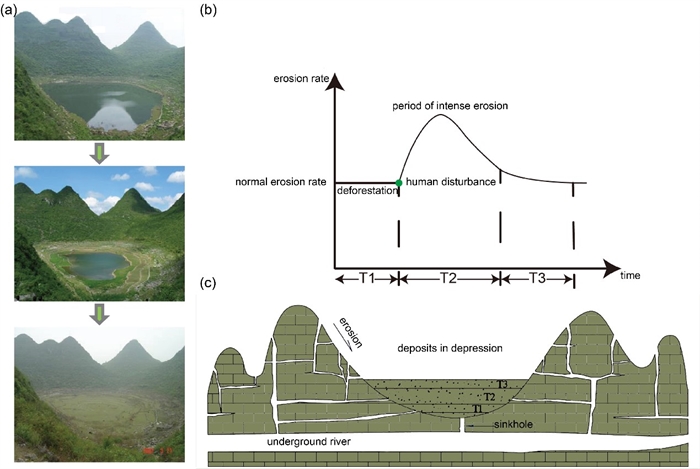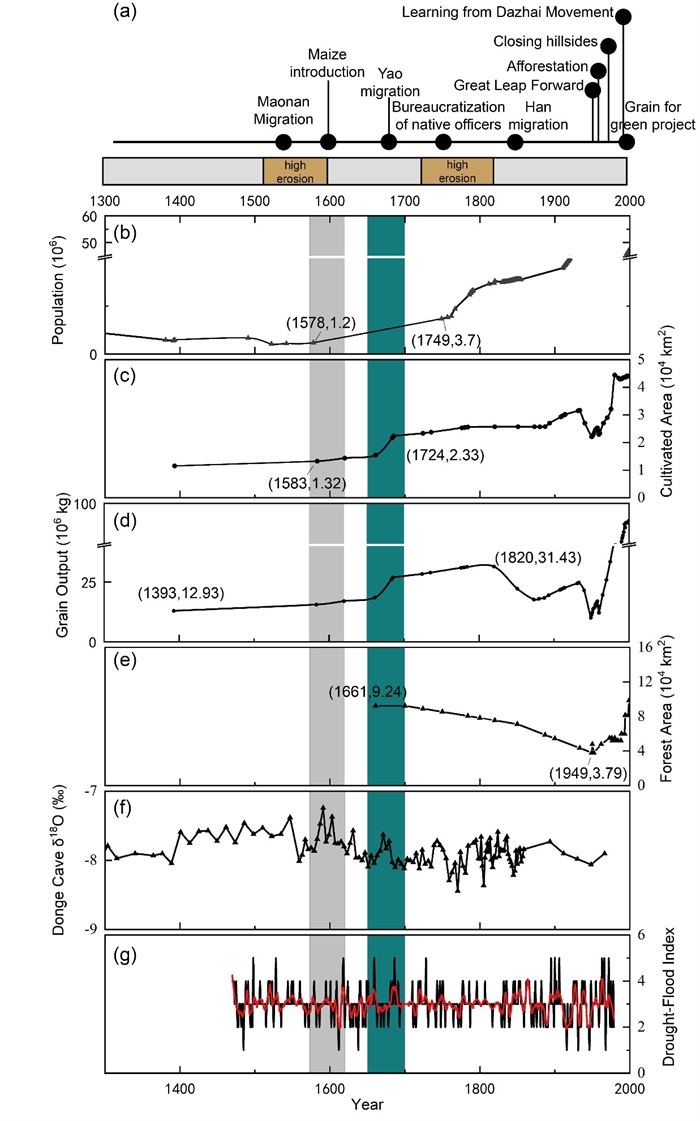Human Disturbance Intensified the Erosion and Sediment Production of Karst Depressions During the Historical Period, New Study
Under the background of large-scale ecological restoration, the karst region of southwest China has become a hotspot of global "greening" in the past 20 years. However, due to the carbonate geological constraints, the positive succession of vegetation naturally restored is slow after human destruction. The natural vegetation restoration in the dolomite area is dominated by grass, while the limestone area often forms relatively stable low shrubs, which makes it difficult to restore forest landscape, which affects the sustainability of "greening" in karst areas.
According to historical records and literature analysis, anthropogenic deforestation is one of the important causes of rocky desertification, but the scattered subjectivity historical records make it difficult to continuously and quantitatively measure the evolution history of rocky desertification in a region.
Recently, the research team led by Prof. Wang Kelin from the Institute of Subtropical Agriculture, Chinese Academy of Sciences pioneeringly analyze the surface process and the causes of human disturbance in the watershed in the historical period based on the filling process in karst depression and the historical environmental information of sediment. An important progress was made in the impact of human disturbance on soil erosion in the karst region of southwest China during the historical period.
The study was published in Science China-Earth Sciences on Sept. 14.
Based on the 137Cs, 210Pb and charcoal 14C dating technology, the sedimentation rate and specific sediment yield of depression sediments in the past 500 years were quantified. The results indicated that erosion and sedimentation rates in the Ming and Qing dynasties (2.51~13.11 t ha−1 a−1) were significantly higher than those in the past century (0.95~6.99 t ha-1 a-1). Additionally, the specific sediment yield in 1921-1963 surpassed that in 1963-2021. Notably, following the migration of the Yao ethnic group in 1628~1700, along with the introduction of maize in 1573~1620, the population and cultivated land in Guangxi increased by more than three times, while the forest cover experienced a significant decline. Human disturbance during the Ming and Qing dynasties (1500~1800) was the primary driver for the deforestation in karst region and the acceleration of sedimentation in depression.
“We originally developed the strategy to combined sediment records and historical records to clarify the impact of historical human disturbance on the evolution of the natural environment in karst area” said Dr. Yue Yuemin, the corresponding authors of the study, “which helps us understand the impact of human disturbance events on the rocky desertification in the current refractory forest area of the southwest karst region, so as to guide the accurate restoration of forest and grassland in the karst area in the future.”
Contact: Yue Yuemin
E-mail: ymyue@isa.ac.cn

Human disturbance and erosion processes in karst depressions(Image by Yuan Shuai)

Human disturbance events and changes in population, food, cultivated land and forest area in the karst area of Guangxi during the historical period(Image by Yuan Shuai)
Download attachments: